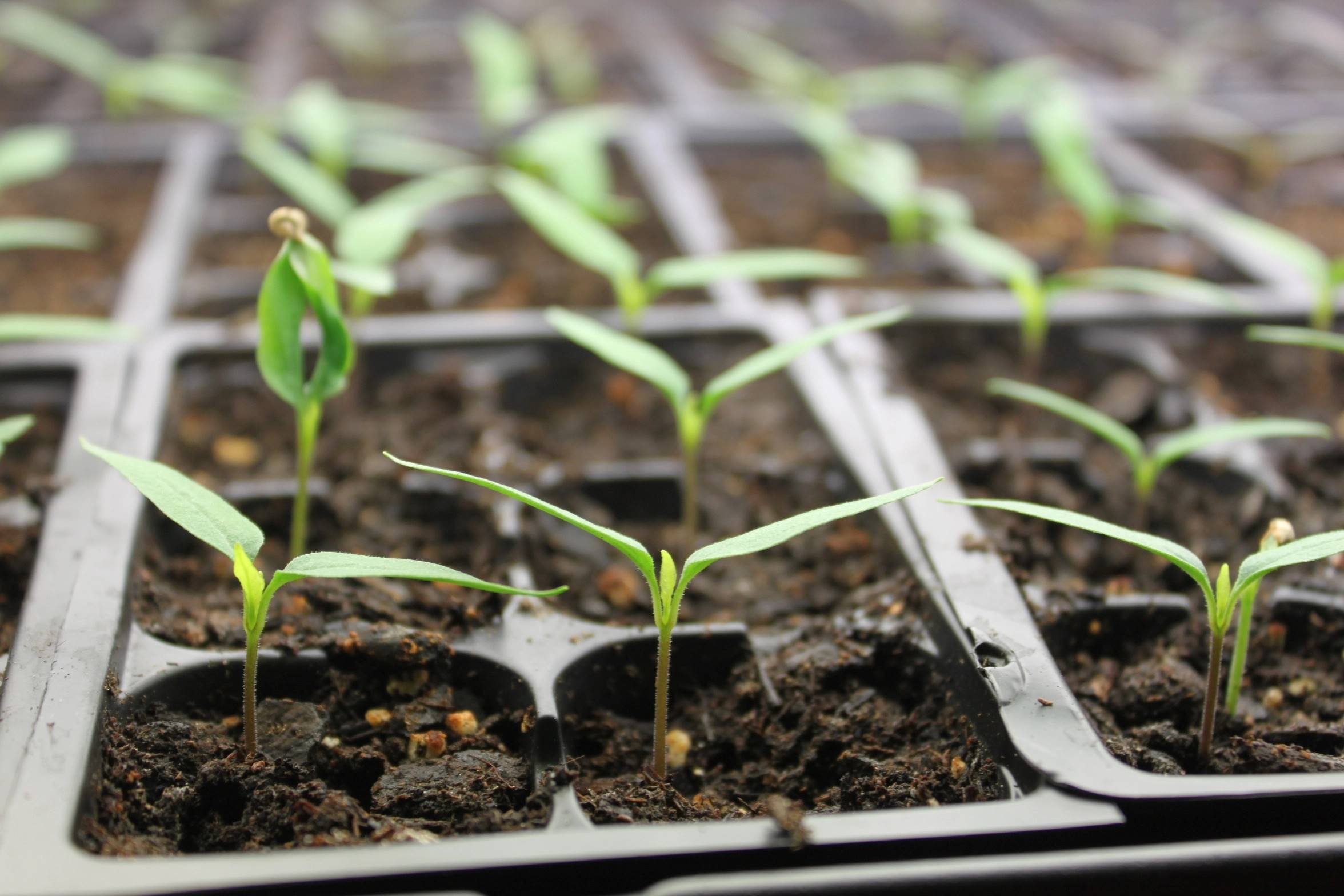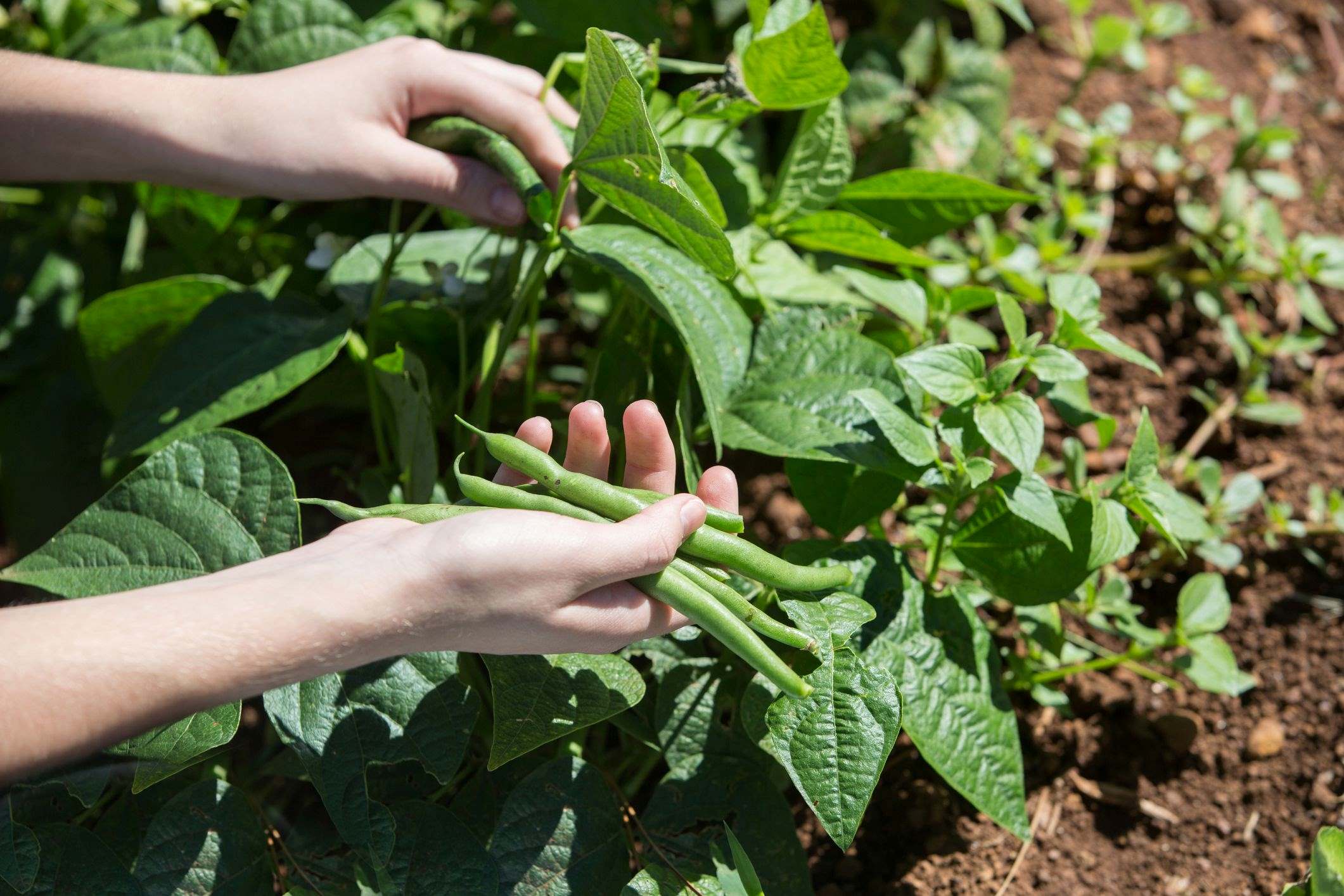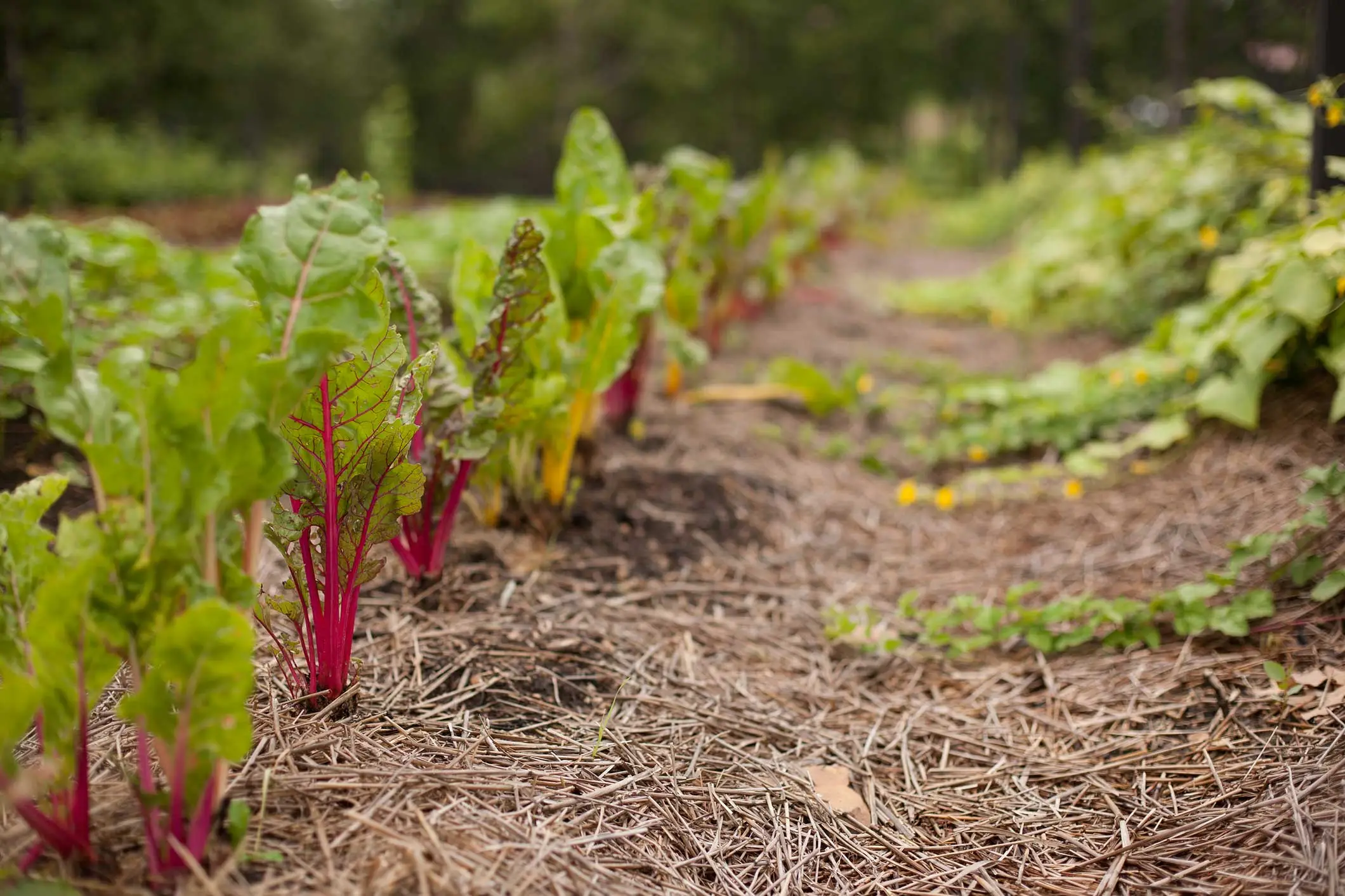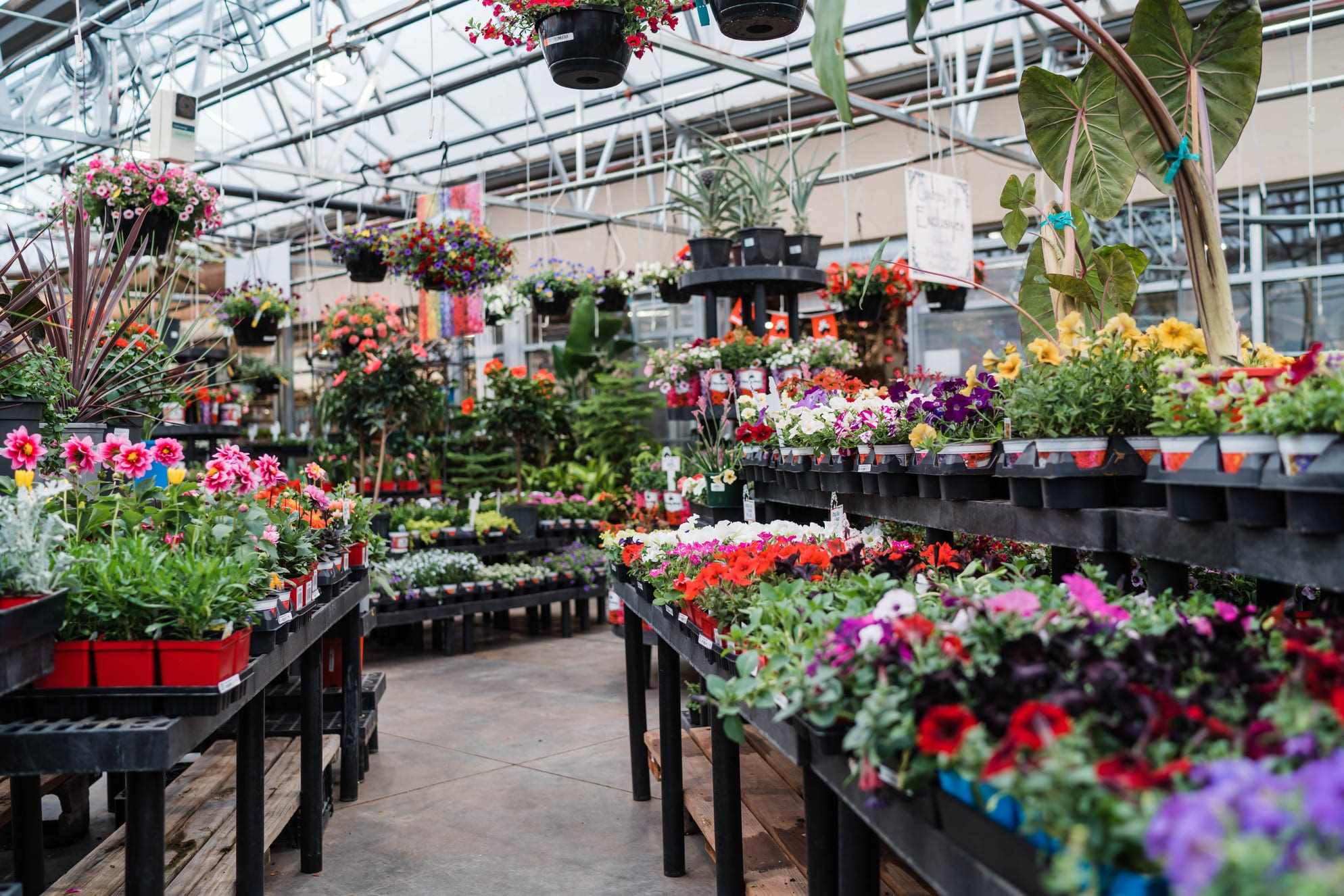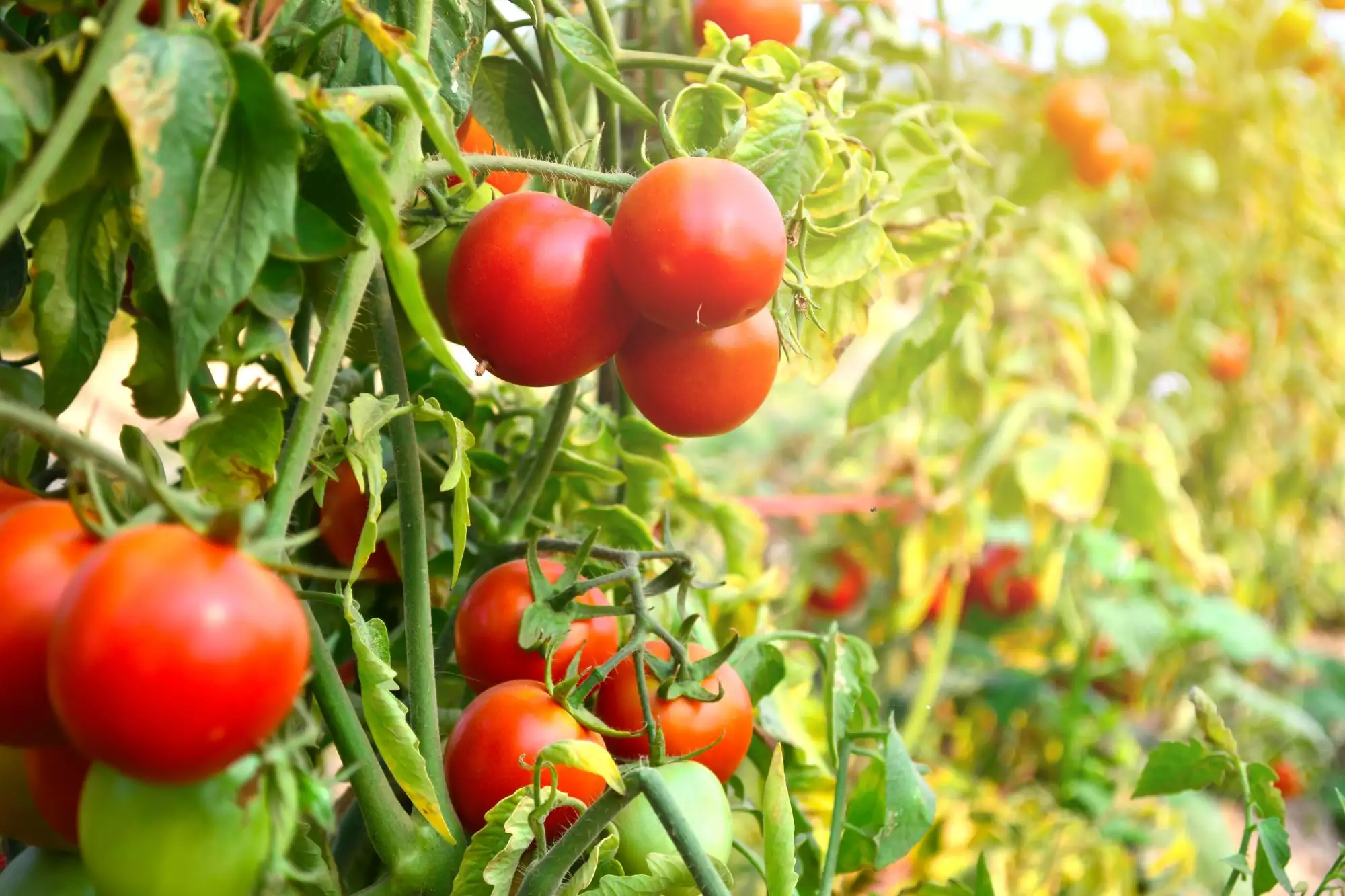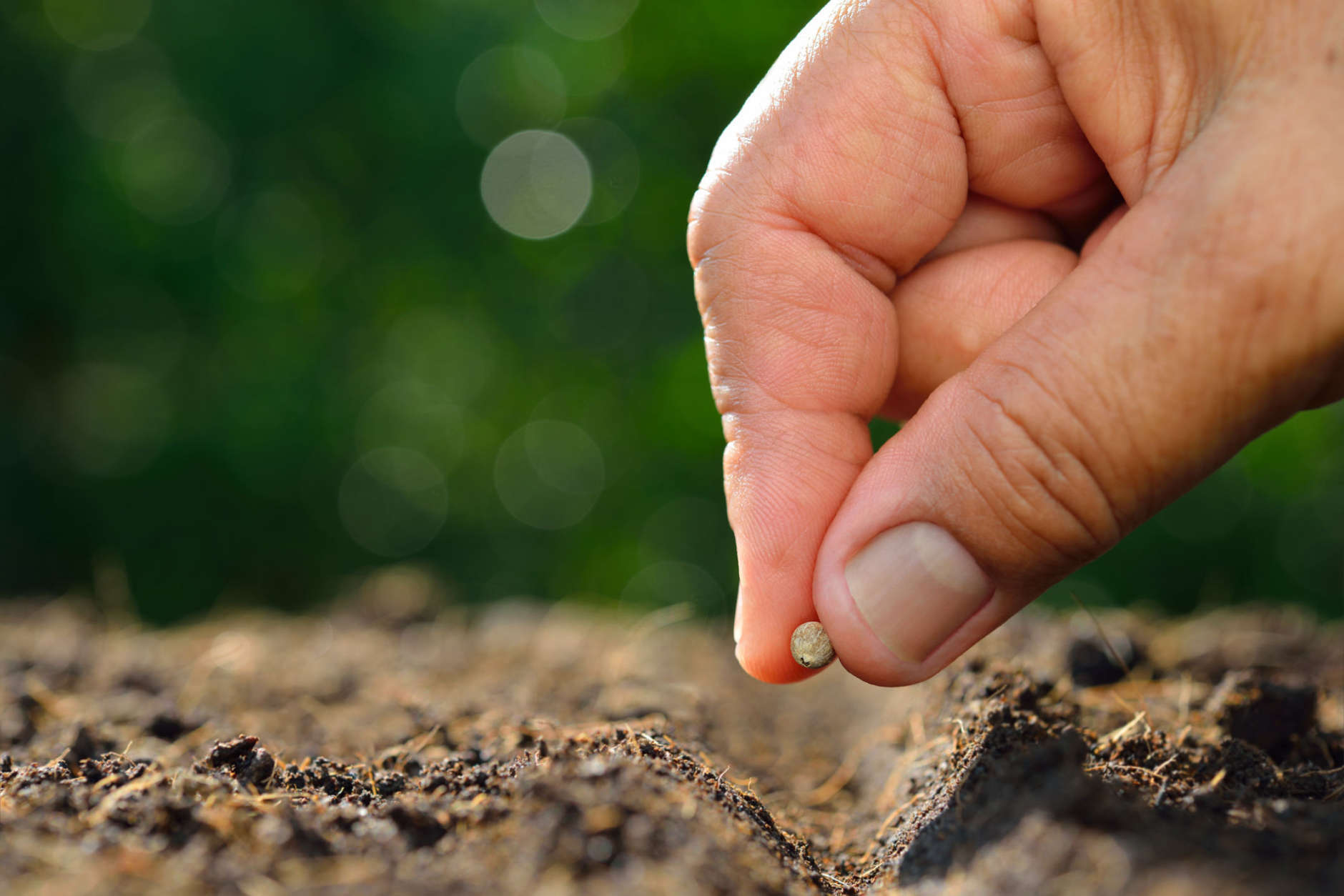Home>Gardening Techniques>Seasonal Gardening>When To Start Planting In Zone 6
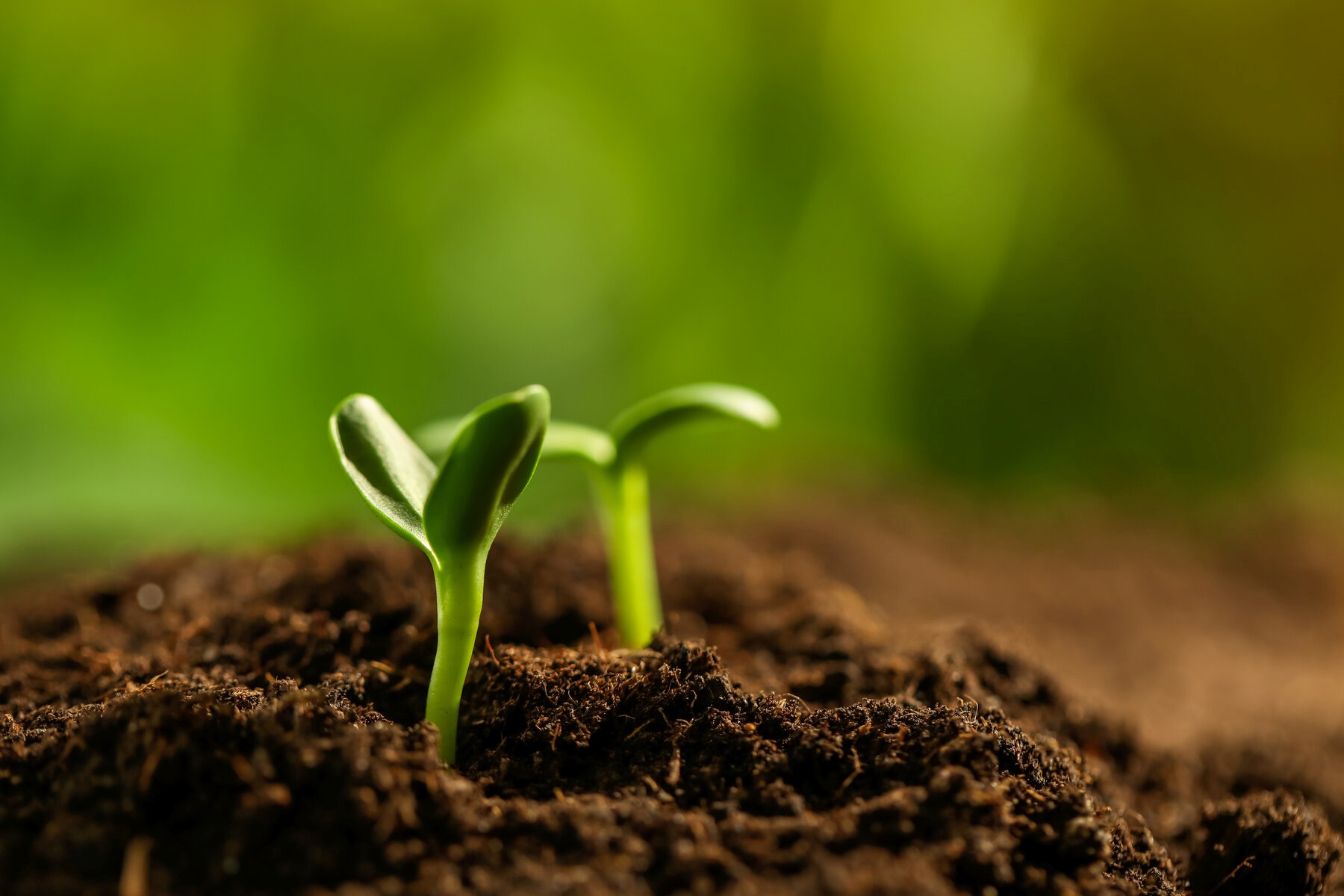

Seasonal Gardening
When To Start Planting In Zone 6
Modified: January 22, 2024
Discover the best time to start planting in Zone 6 with our seasonal gardening guide. Plan your garden effectively and maximize your success.
(Many of the links in this article redirect to a specific reviewed product. Your purchase of these products through affiliate links helps to generate commission for Chicagolandgardening.com, at no extra cost. Learn more)
Table of Contents
Introduction
Welcome to the world of seasonal gardening in Zone 6! Whether you’re a seasoned gardener or just starting out, understanding the optimal time to start planting can greatly increase your chances of a successful and bountiful harvest. Zone 6, which encompasses regions with cold winters and moderate summers, offers a unique set of challenges and opportunities for gardeners.
In this article, we will explore the various factors to consider before planting in Zone 6, including the climate, soil condition, and frost dates. We will also delve into the recommended planting times for different crops, with a focus on both the early spring and late spring planting windows. Additionally, we will discuss the options for early fall and late fall planting, as these seasons can be particularly fruitful in Zone 6. By the end, you will have a comprehensive understanding of when to start planting in Zone 6 and be ready to embark on a successful gardening journey.
So, grab your gardening gloves and let’s dig in!
Understanding Zone 6
Before we dive into the intricacies of planting in Zone 6, let’s first understand what it means to be in this particular gardening zone. Zone 6 is characterized by its cold winters and moderate summers, making it a unique climate for gardeners.
The United States Department of Agriculture (USDA) has divided North America into 13 plant hardiness zones, with Zone 6 covering a significant portion of the country. In Zone 6, the average minimum winter temperature ranges from -10°F to 0°F (-23°C to -18°C), which can pose challenges for growing certain crops that are more suited for warmer climates.
However, Zone 6 also offers certain advantages. The moderate summers provide a longer growing season compared to colder zones, allowing gardeners to cultivate a wide range of plants. Additionally, the winter cold provides a natural pest control mechanism, reducing the risk of certain pest infestations.
In order to successfully garden in Zone 6, it’s important to consider the unique climatic conditions. The cold winters mean that some plants may need protection, while others may need to be grown as annuals rather than perennials. It’s also important to select plant varieties that are well-suited for colder climates and have shorter maturation periods.
Understanding the particular nuances of Zone 6 will help you make informed decisions about which plants to grow and when to plant them. With the right knowledge and planning, you can create a thriving garden that thrives in this beautiful and diverse gardening zone.
Factors to Consider Before Planting
Before you start planting in Zone 6, it’s essential to consider several factors that can greatly impact your gardening success. By taking these factors into account, you can ensure that your plants thrive and produce a fruitful harvest.
1. Climate: Zone 6 has a unique climate with cold winters and moderate summers. Understanding the average temperatures, frost dates, and length of the growing season in your specific area is crucial for choosing the right plants and determining the optimal planting times.
2. Soil Condition: Assessing and improving your soil condition is vital for plant growth and health. Conduct a soil test to determine the pH level, nutrient content, and drainage capacity of your soil. Depending on the results, you may need to amend the soil with organic matter, such as compost or aged manure, to provide the necessary nutrients and improve soil structure.
3. Light Exposure: Different plants have varying light requirements. Consider the amount of sunlight your garden receives throughout the day and select plants accordingly. Some crops, like tomatoes and peppers, thrive in full sun, while others, such as leafy greens, tolerate partial shade.
4. Watering Needs: Adequate watering is essential for plant health and productivity. Consider the availability of water in your garden and the specific watering needs of the plants you intend to grow. Some plants may require consistent moisture, while others are more drought-resistant.
5. Pest and Disease Control: Being proactive in pest and disease control can prevent potential damage to your plants. Research common pests and diseases in Zone 6 and implement preventive measures, such as using organic pest control methods or practicing crop rotation.
6. Garden Layout and Companion Planting: Planning the layout of your garden and utilizing companion planting techniques can maximize space utilization and promote natural pest control. Consider the growth habits and compatibility of different plants to create a harmonious and productive garden ecosystem.
By carefully considering these factors before planting, you can set yourself up for gardening success in Zone 6. Understanding the unique characteristics of your garden will enable you to make informed decisions about plant selection, planting times, and garden management strategies.
Recommended Planting Times for Different Crops
Knowing the optimal planting times for different crops is crucial in Zone 6 to ensure a successful and productive growing season. By following these recommendations, you can maximize your chances of growing healthy plants and enjoying a bountiful harvest.
1. Root vegetables: Root crops like carrots, radishes, and beets thrive in the cool temperatures of early spring. Plant these crops as soon as the soil can be worked in early April. To extend the harvest, you can also make successive plantings every few weeks until late spring.
2. Leafy greens: Lettuce, spinach, kale, and other leafy greens prefer cooler weather. Start sowing seeds indoors in late winter or early spring and transplant them outdoors once the danger of frost has passed. You can continue planting new batches throughout the season for a continuous supply.
3. Cruciferous vegetables: Cabbage, broccoli, cauliflower, and Brussels sprouts do well when planted in late spring. Start seeds indoors in mid to late winter and transplant outdoors in early to mid-spring. These cool-season crops can also tolerate light frosts, giving you an extended harvest period.
4. Tomatoes and peppers: Warm-season crops like tomatoes and peppers need to be started indoors 6-8 weeks before the last expected frost date. Transplant them outdoors in late spring after all danger of frost has passed, usually around mid-May. These heat-loving plants require full sun and well-drained soil.
5. Beans and corn: Beans and corn are warm-season crops that prefer warm soil to germinate and grow. Sow seeds directly in the garden after the danger of frost has passed and the soil has warmed up, usually in late spring or early summer. These crops benefit from consistent moisture and regular fertilization.
6. Herbs: Many herbs, such as basil, parsley, and dill, are annuals that thrive in warm weather. Start seeds indoors or directly sow them in the garden after the last frost date. These aromatic plants require well-drained soil and ample sunlight to flourish.
Keep in mind that these recommended planting times can vary depending on the specific conditions in your area. Consider factors such as microclimates, weather patterns, and frost dates when determining the best planting times for your garden.
By aligning your planting schedule with the recommended times for each crop, you can create a productive and diverse garden in Zone 6. Experiment with different varieties and techniques to discover what works best for your specific garden and climate.
Early Spring Planting in Zone 6
Early spring is an exciting time for gardeners in Zone 6 as the weather starts to warm up and the soil begins to thaw. This is the perfect opportunity to start planting cold-hardy crops that can withstand cooler temperatures and even light frosts. Here are some recommendations for early spring planting in Zone 6:
- Peas: Peas are a cool-season crop that thrives in the early spring temperatures of Zone 6. Sow pea seeds directly into the garden as soon as the soil can be worked, usually in late March or early April. Choose from snap peas, snow peas, or shelling peas depending on your preference.
- Radishes: Radishes are quick-growing root vegetables that can be harvested in just a few weeks. Sow radish seeds directly into the garden in early spring. They prefer cool weather and will tolerate light frost.
- Spinach: Spinach is a nutrient-rich leafy green that loves cool temperatures. Start sowing spinach seeds in early spring, as soon as the soil is workable. You can also make successive plantings every few weeks for a continuous harvest.
- Lettuce: Lettuce is a staple in any garden and is best grown in the cooler temperatures of spring. Sow lettuce seeds directly into the garden in early spring or start them indoors and transplant them outdoors once the danger of frost has passed.
- Kale: Kale is a cold-hardy leafy green that can tolerate frost and even mild snowfall. Start kale seeds indoors in late winter and transplant them outdoors in early spring. The cooler temperatures enhance the sweetness and tenderness of the leaves.
When planting early in the spring, it is important to closely monitor the weather and protect your plants from unexpected late frosts. Consider using row covers or cloches to provide a layer of protection to your young seedlings.
Additionally, make sure to prepare the soil before planting by removing any debris and enriching it with organic matter such as compost or aged manure. This will ensure that your plants have access to the nutrients they need for healthy growth.
The early spring planting season in Zone 6 provides an opportunity to jump-start your garden and enjoy fresh harvests as soon as possible. Take advantage of this time to sow cold-hardy crops and set the stage for a successful growing season.
Late Spring Planting in Zone 6
As the temperatures continue to rise and the risk of frost diminishes, late spring offers another window of opportunity for planting in Zone 6. This is the time to sow warm-season crops that thrive in the heat and longer daylight hours. Here are some recommendations for late spring planting in Zone 6:
- Tomatoes: Tomatoes are a favorite among gardeners and thrive in the warm summer temperatures of Zone 6. Start tomato seeds indoors 6-8 weeks before the last expected frost date and transplant them outdoors in late spring, usually around mid-May. Place them in a sunny spot with well-drained soil for optimal growth.
- Peppers: Peppers love the heat and sunshine, making them perfect for late spring planting in Zone 6. Start pepper seeds indoors 8-10 weeks before the last frost date and transplant them outdoors after all danger of frost has passed. Choose from sweet bell peppers, spicy jalapenos, or mild banana peppers.
- Eggplant: Another heat-loving crop, eggplant, thrives in the hotter months of late spring and summer. Start eggplant seeds indoors 8-10 weeks before the last expected frost date and transplant them outdoors in late spring when the soil has warmed up. Provide them with full sun and well-drained soil for optimal growth.
- Cucumbers: Cucumbers are a refreshing addition to any summer garden and can be started from seeds directly in the garden in late spring. Plant them in a sunny spot with fertile soil and provide support, such as trellises or cages, for the vines to climb as they grow.
- Zucchini: Zucchini is a prolific vegetable that thrives in warm temperatures. Start zucchini seeds directly in the garden after all risk of frost has passed, usually in late spring. Give them plenty of space to spread out and provide consistent moisture for optimal fruit production.
When planting in late spring, make sure to provide adequate water and watch out for signs of pests and diseases. Regularly monitor your plants for any issues and address them promptly to prevent any problems from escalating.
Late spring planting in Zone 6 allows you to take advantage of the warmer temperatures and longer growing season. By selecting the right warm-season crops and providing them with the necessary care, you can look forward to a bountiful harvest in the months to come.
Early Fall Planting in Zone 6
The arrival of fall doesn’t mean the end of the gardening season in Zone 6. In fact, early fall is an excellent time for planting certain crops that thrive in cooler temperatures and shorter daylight hours. Take advantage of this season to extend your growing season and enjoy a harvest even as the weather begins to cool. Here are some recommendations for early fall planting in Zone 6:
- Lettuce: Lettuce is a cool-season crop that can tolerate light frosts. Start planting lettuce seeds directly into the garden in early fall, around August or September. Choose from a variety of leafy greens such as romaine, butterhead, or loose-leaf lettuce. Harvest the leaves as needed for fresh salads.
- Spinach: Spinach is another cold-hardy leafy green that thrives in the cooler temperatures of fall. Sow spinach seeds directly into the garden in early fall or transplant seedlings from indoor starts. The mild days and cool nights of early fall provide ideal conditions for spinach growth.
- Kale: Kale is a versatile and nutritious leafy green that can withstand colder temperatures. Plant kale seeds directly into the garden in early fall, ensuring they have enough time to mature before the first hard frost. Choose from various types, such as curly kale or Lacinato kale, also known as dinosaur kale.
- Carrots: Carrots are a root vegetable that thrives in the cool temperatures of fall. Sow carrot seeds directly into the garden in early fall, ensuring the soil is well-prepared and free from clumps. Remember to water consistently to promote even germination and prevent the soil from drying out.
- Broccoli: Broccoli is a cool-season crop that performs well in the fall garden. Start broccoli seeds indoors in mid-summer and transplant them outdoors in early fall. The cooler temperatures and shorter days of early fall help produce sweet and tight heads of broccoli.
When planting in early fall, keep an eye on the weather and be prepared to protect your crops from frost. Covering them with row covers or cloths during cold nights can help extend the growing season and prevent frost damage.
Don’t forget to keep the soil moist and provide adequate drainage to avoid issues such as rot or disease. Regular weeding and monitoring for pests will help ensure the success of your early fall plantings.
By taking advantage of the cooler temperatures and favorable growing conditions, early fall planting in Zone 6 allows you to enjoy fresh and nutritious harvests well into the autumn months.
Late Fall Planting in Zone 6
While the gardening season may start to wind down as winter approaches, there are still opportunities for late fall planting in Zone 6. Late fall planting allows you to take advantage of the cool weather and prepare for an early start to the next growing season. Here are some recommendations for late fall planting in Zone 6:
- Garlic: Garlic is a cold-hardy crop that is traditionally planted in late fall for a harvest the following summer. Separate the garlic bulbs into individual cloves and plant them with the pointed end facing up. Cover with a layer of mulch to protect the cloves during the winter months.
- Onions: Onions can also be planted in late fall for an early summer harvest. Choose onion sets or small bulbs and plant them directly into the garden. They will establish roots over the winter and resume growth in the spring, resulting in larger and more flavorful onions.
- Fall Cover Crops: Planting cover crops such as winter rye or crimson clover can help improve soil health and prevent erosion during the winter months. These crops can be sown in late fall and will provide valuable organic matter when tilled into the soil in the spring.
- Perennial Herbs: Late fall is also an ideal time to divide and transplant perennial herbs such as oregano, thyme, and chives. Dig up clumps of existing plants and separate them into smaller sections, then replant them in well-prepared soil. This process rejuvenates the herbs and promotes healthy growth.
- Strawberry Plants: Strawberry plants can be planted in late fall to establish their root systems before winter dormancy. Choose disease-resistant varieties and plant them in well-drained soil. Mulch around the plants to protect them during the winter and look forward to a bountiful harvest the following summer.
When late fall planting, be mindful of the decreasing daylight hours and cooler temperatures. Water the newly planted crops thoroughly and provide a layer of mulch to protect the soil and insulate the plants as winter sets in.
Late fall planting in Zone 6 allows you to make the most of the remaining gardening season and set the stage for a successful start to the next year. Take advantage of this time to plant crops that can withstand the winter cold and prepare your garden for a fruitful season ahead.
Conclusion
Gardening in Zone 6 presents a unique set of challenges and opportunities, but with the right knowledge and planning, you can have a thriving garden throughout the seasons. Understanding the climate and factors influencing plant growth is essential for successful gardening in this zone.
By considering key factors such as climate, soil condition, and light exposure, you can make informed decisions about what and when to plant. The recommended planting times for different crops provide a baseline for your gardening schedule, ensuring that you make the most of your growing season.
From early spring plantings of peas and radishes to late spring plantings of tomatoes and peppers, each season offers a variety of crops suited to the specific conditions of Zone 6. Additionally, exploring options for early fall and late fall plantings allows you to extend your harvest and maximize the productivity of your garden.
Remember the importance of soil preparation, water management, and pest control throughout the year. Regular maintenance and care will help your plants thrive and minimize potential issues.
So, whether you’re a seasoned gardener or just starting out, embrace the joys of seasonal gardening in Zone 6. With the right planning, attention to detail, and a little bit of love, you can create a beautiful and productive garden that brings you joy and a bountiful harvest year after year.


